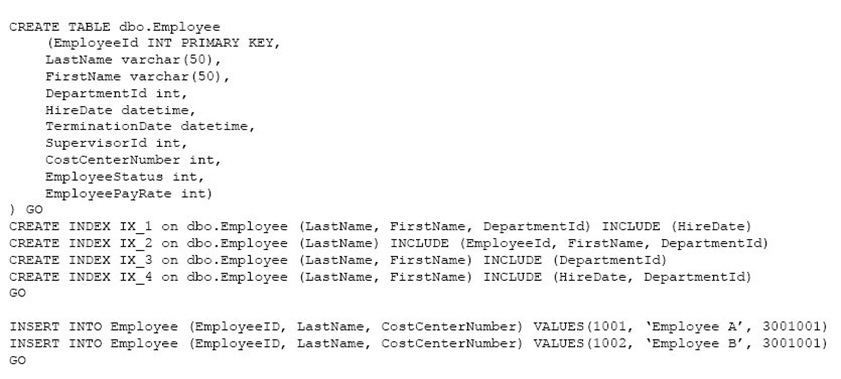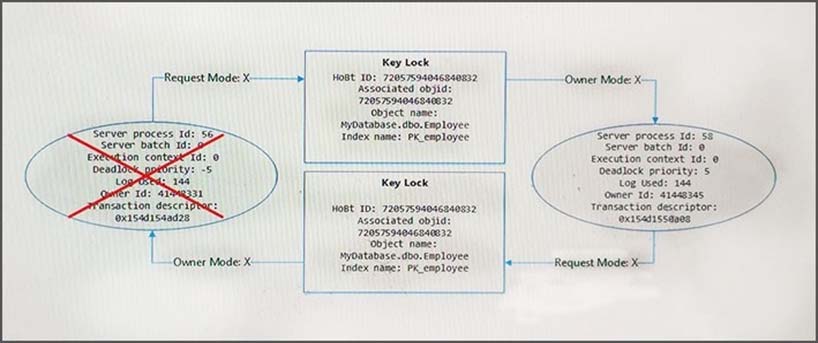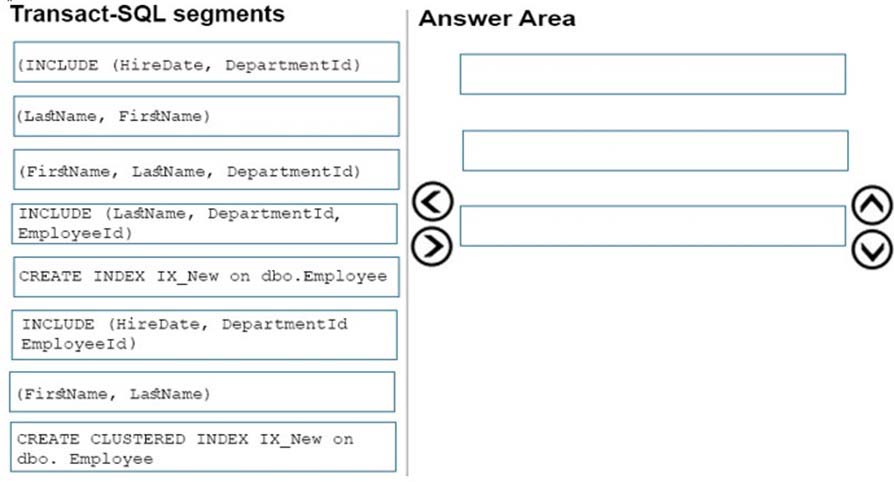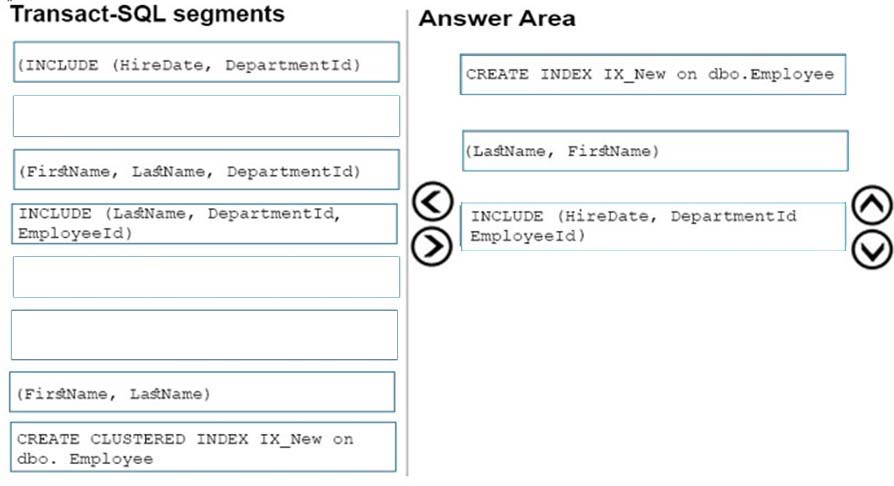

DRAG DROP -
Case study -
Background -
You have a database named HR1 that includes a table named Employee.
You have several read-only, historical reports that contain regularly changing totals. The reports use multiple queries to estimate payroll expenses. The queries run concurrently. Users report that the payroll estimate reports do not always run. You must monitor the database to identify issues that prevent the reports from running.
You plan to deploy the application to a database server that supports other applications. You must minimize the amount of storage that the database requires.
Employee Table -
You use the following Transact-SQL statements to create, configure, and populate the Employee table:
Application -
You have an application that updates the Employees table. The application calls the following stored procedures simultaneously and asynchronously:
✑ UspA: This stored procedure updates only the EmployeeStatus column.
✑ UspB: This stored procedure updates only the EmployeePayRate column.
The application uses views to control access to data. Views must meet the following requirements:
✑ Allow users access to all columns in the tables that the view accesses.
Restrict updates to only the rows that the view returns.

You observe that the four indexes require a large amount of disk space. You must reduce the amount of disk space that the indexes are using.
You need to create a single index to replace the existing indexes.
Which three Transact-SQL segments should you use to develop the solution? To answer, move the appropriate Transact-SQL segments from the list of Transact-
SQL segments to the answer area and arrange them in the correct order.
NOTE: More than one order of answer choices is correct. You will receive credit for any of the correct orders you select.
Select and Place:


moehijawe
Highly Voted 5 years, 4 months agoJohnFan
5 years, 3 months agoAnette
Highly Voted 4 years, 11 months agoLeonLeon
4 years, 11 months agodelgadillo
4 years, 11 months agoLuzix
Most Recent 4 years, 7 months agoMvubu
4 years, 8 months agodatabasejamdown
4 years, 8 months agoRohitRaj2311
4 years, 7 months agoJohnFan
5 years, 3 months agoAnette
4 years, 11 months agoAnette
4 years, 11 months agoMosufe
4 years, 10 months agoMarcusJB
4 years, 8 months agoZikato
5 years, 4 months agoBartek
5 years, 4 months agoKuratko
5 years, 4 months agoJohnFan
5 years, 3 months agoNew_user
5 years, 5 months agoMosufe
4 years, 10 months agogeekeek1
4 years, 5 months agoBruceWayne
5 years, 4 months agolauferr
5 years, 1 month ago